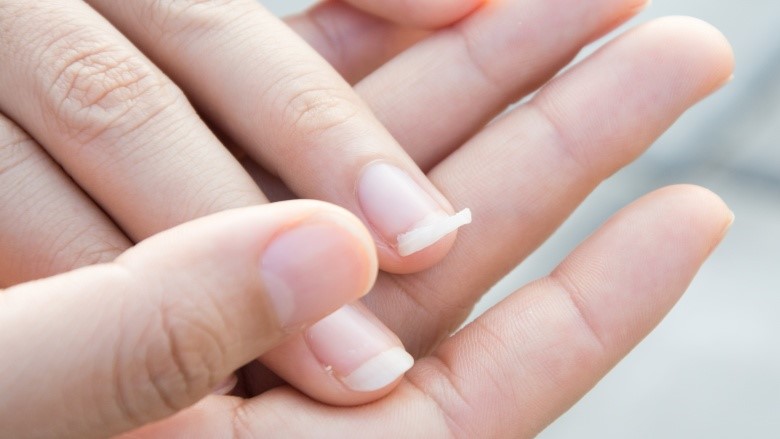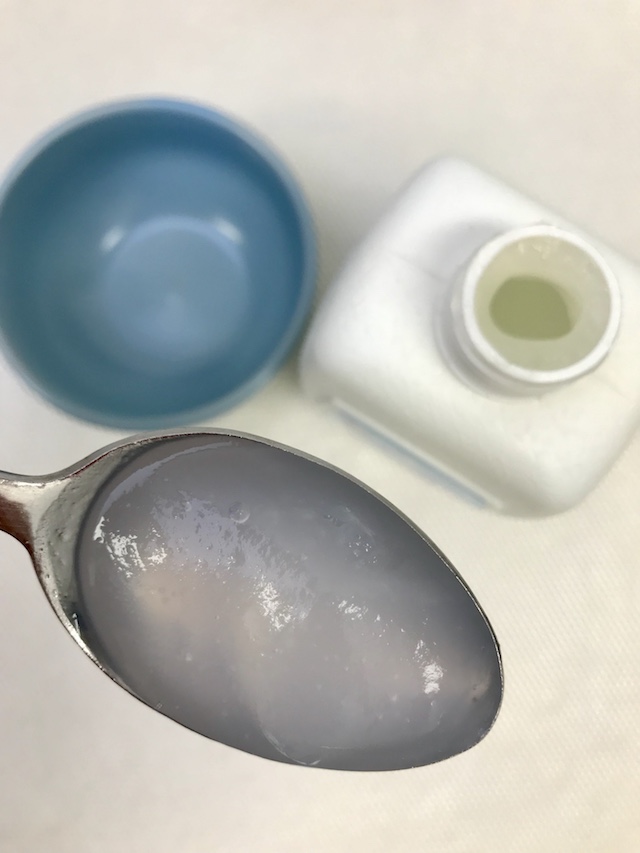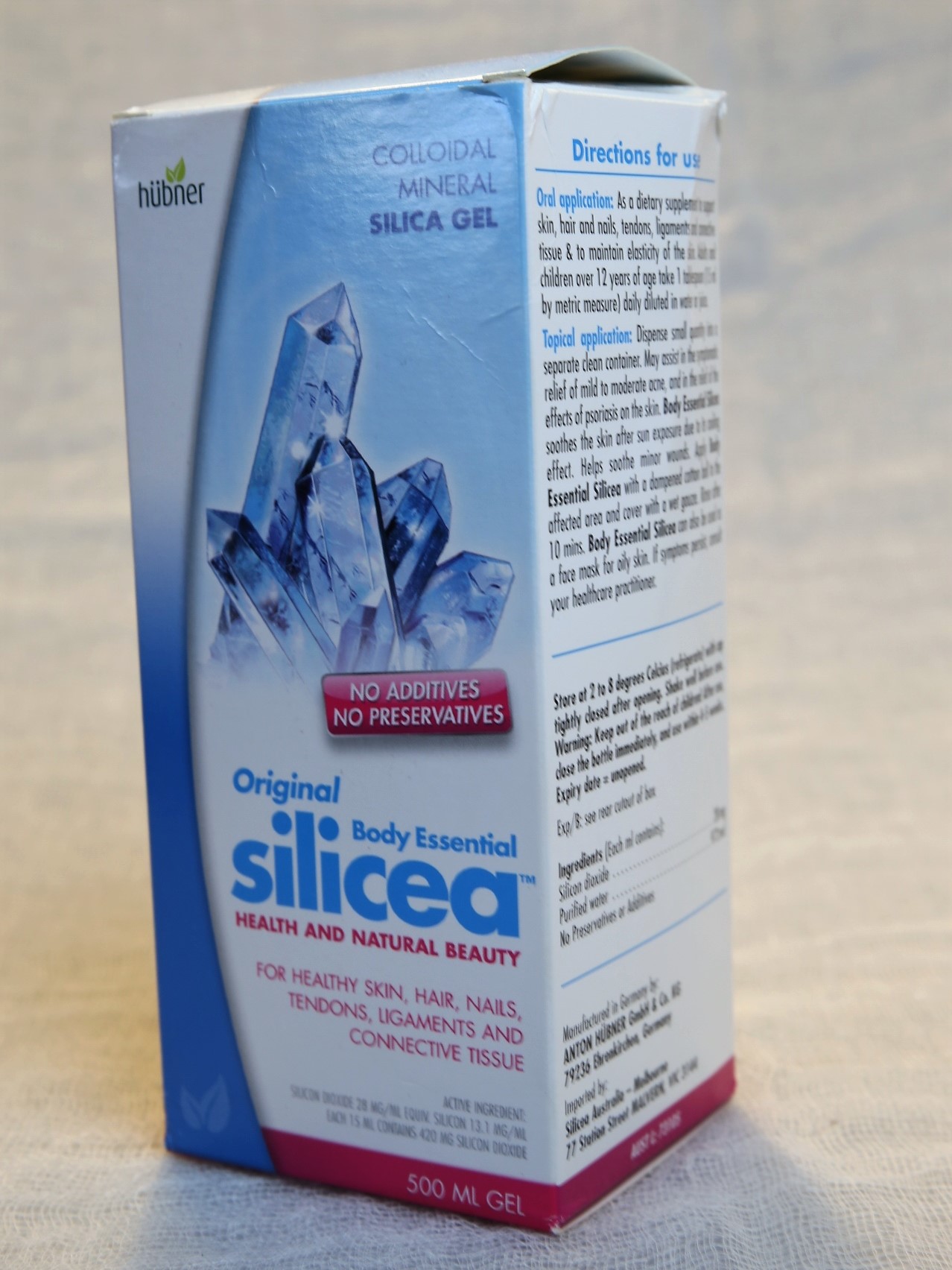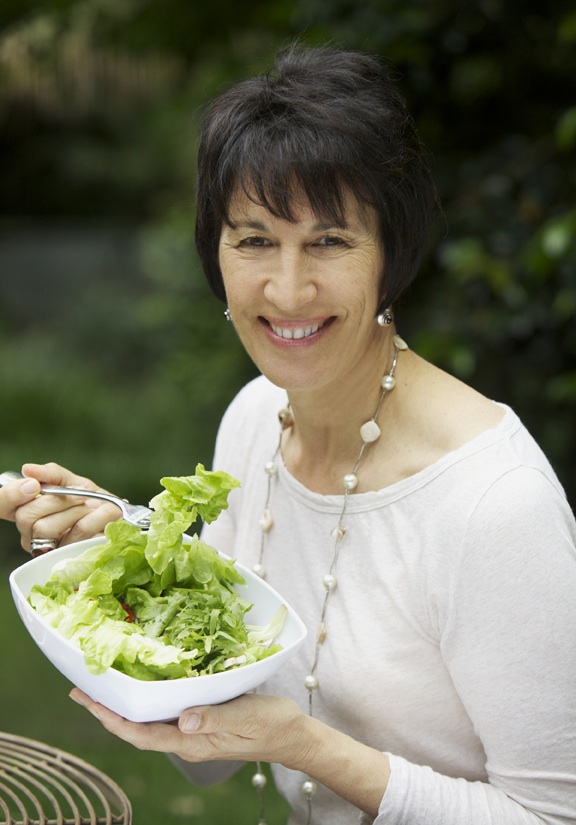Product Snapshot: Silicea Colloidal Silica Gel

Silicea silica gel by Hubner has had me intrigued for years. Whenever my nails are bad (think chipping, flaking, breaking, tearing, pathetic), it seems to magically restore their strength and length in two weeks! What’s in it? Why does it work for me? I’ve always wondered. So, when a sample bottle arrived in the mail, I thought maybe it was time to check it out. Here’s my story and an overview.
How I first discovered Silicea
I started taking Silicea over ten years ago. I can still recall when I started. I was on a family skiing trip with our kids and another family in the northern alps of Italy. At the Dolomites (once part of Austria and now part of Italy), they mainly speak German and, sadly, my German is pretty non-existent. This meant I couldn’t ask for anything at the local shops as the language barrier was just too great.
During that time away, I remember looking down at my nails and thinking I must do something when we returned to Australia. The nails were down to the very edge of my finger tips yet they still kept breaking, chipping at the side, tearing, and flaking off. They caused me a lot of pain. My toe nails also had cracks that would travel lengthwise down into the nail, always on the sides.
 Despite my best efforts to avoid nicks or catches, I recall a last fragment of white nail shearing off, leaving the remaining nail sore and unhappy. I had to wrap it in a band-aid to stop it hurting and catching on anything and tearing further.
Despite my best efforts to avoid nicks or catches, I recall a last fragment of white nail shearing off, leaving the remaining nail sore and unhappy. I had to wrap it in a band-aid to stop it hurting and catching on anything and tearing further.
Once back home, I heard about Silicea gel and decided to give it a try. After all, I had nothing to lose. It was promoted as an aid to nails. The pack promised: "For strong nails which can grow longer before breaking or chipping" and "Improves the condition of hair and nails". Sounded good to me – if it worked.
What Silicea did for me
I tried the liquid gel only because that was the only product I could find at the pharmacy. Later I did try the tablets as they were less costly (and gave me calcium too) but I didn't see the improvement in nail growth that I did with the gel. Maybe the gel is more bioavailable?
The adult dose was one tablespoon * (15 mL) a day and I finished off a whole 500 mL bottle over the next four weeks. I was surprised yet pleased to see all my nails grow longer, become strong, and not chip off!
Since then, I buy the occasional bottle when I notice my nails beginning to deteriorate. I swallow a course of a tablespoon a day or every other day until it runs out and I always see an improvement in my nails. My daughter also finds the same. Genetics? Who knows?
The sample
When I received a sample of the Silacea gel from the Australian distributor, I thought I'd write up my experience and see if any others had experienced the same results. There's scant research into silica and no local experts so I'd be interested to hear if any of you have tried it too? Does it help your nails as it did mine?
What Silicea tastes like
The gel is thick and chalk-like with no real taste at all. It looks like a grey-white, thick gelatinous liquid, not dissimilar in texture to a pourable yoghurt. I squeeze it onto a tablespoon and swallow it down. It’s easy. There's no suffering or screwing up of the face. It’s tasteless and easy to swallow.
The pamphlet with the bottle says to dilute it in water or juice and take it between meals. But I find that I don't need to disguise it. It tastes bland and nothing, really.
What's in it?
The label says it's simply silicon dioxide plus purified water. Silica is a common oxide form of silicon – so silica is simply silicon dioxide. Each 15 mL tablespoon gives you 420 mg of silicon dioxide. My calculations show this equates to 196 mg pure silicon.
How does it compare to Horsetail?
The herbal world suggests that supplements of the plant horsetail are a useful source of silicon and calcium. However, I have never found these give the same effective results as this gel. Silicon has no recommended dietary intake although data suggest it is essential to good health.
The Silicea website says it’s a “true colloidal gel of natural silica in which miniscule BIOAVAILABLE particles are so finely dispersed that a thick non-sedimentary gel is formed. The small size of the tiny particles make it easy for your body to absorb.” Well, I can confirm this.
Why does it work?
Does this mean I'm deficient in silicon? I hardly think so as I eat a healthy, balanced diet with lots of unrefined whole grains (the main sources of silica) such as oats and grains with their outer husks or hulls still on such as pearl barley, wheat bran, brown rice and quinoa.
 However, the website does note that “as our bodies age, we need it when the supply and absorption of silicon in our diet is insufficient, and our bodies become brittle and lose tone.” Well, mine may have now but not when I was fit and skiing every day.
However, the website does note that “as our bodies age, we need it when the supply and absorption of silicon in our diet is insufficient, and our bodies become brittle and lose tone.” Well, mine may have now but not when I was fit and skiing every day.
On searching through research articles, I found that
- The food supply contributes enough silicon so most of us are unlikely to be deficient.
- Deficiency has been reported and includes distressing symptoms such as deformities of the skull and bones, poorly-formed joints, reduced content of cartilage and collagen deposits in the femur and spine.
- Silicon appears to be safe. There are almost no anecdotes of toxicity or excess intake.
Apart from my cracked nails, I don’t have any of the other signs of deficiency namely:
- Loose, weak connective tissue
- Skin impurities
- Itchy skin
- Dull split hair
- Problems with teeth and gums
- Weak or damaged tendons and ligaments
If I'm not deficient and can absorb silicon normally, why does Silicea gel work and boost the strength of my nails? It's a biological mystery. One of those funny quirks of the body that I've noticed over the years.
NOTE: I have not received any payment from Silicea and apart the one sample, I have bought and paid for every bottle myself. I have nothing to gain from writing this. I don't wear nail polish and have even nails minus any ridges or white flecks.
When I was in my 20s, I recall how gelatine capsules were once promoted for stronger nails. I never took them so can't comment but I do see the effect of the silicon so something must be going on. I'd love to hear back from you via Facebook so we can start a discussion.
Pros of taking the silica gel
- It’s quick and easy to take. No horrible after-taste, no yucky dispenser
- It’s the world’s best-selling silica supplement for nails, skin and hair
- It keeps well without any preservatives or additives.
Cons
- It's expensive. A 500 mL bottle retails for over A$40 but you can spot it on special for under $30. Or buy a two-pack for around $50. It lasts well unrefrigerated in your cupboard. Once opened, you should store in the refrigerator and use within 4 or 5 weeks, which I do.
- It’s made in Germany by Anton Hubner GmbH and imported into Australia by Silicea Australia in Melbourne. So plenty of airmiles!
My verdict?
Clearly, I will keep buying the product and am always on the lookout for it on special. Yes, its cost is a barrier but I have found it works for me for reasons I don’t fully understand. I hate it when I’m at the beck and call of any product, let alone one that is part of the beauty industry with its overhype, salesy images of stunning models and slick marketing. I still can’t work out why this gel would boost my nails so well. But it does.
Disclosure
I received one bottle from Silicea Australia which I’ve consumed but I was buying it regularly before all this. And always wondering why the heck it worked!
* It’s worth noting here that Australian tablespoons are 20 mL. So make sure you measure the dose.




 This post was researched and written by Catherine Saxelby, an accredited nutritionist, dietitian, author and award-winning food communicator. Catherine's goal is to help busy working women eat well, maintain a healthy weight and boost their energy.
This post was researched and written by Catherine Saxelby, an accredited nutritionist, dietitian, author and award-winning food communicator. Catherine's goal is to help busy working women eat well, maintain a healthy weight and boost their energy.
